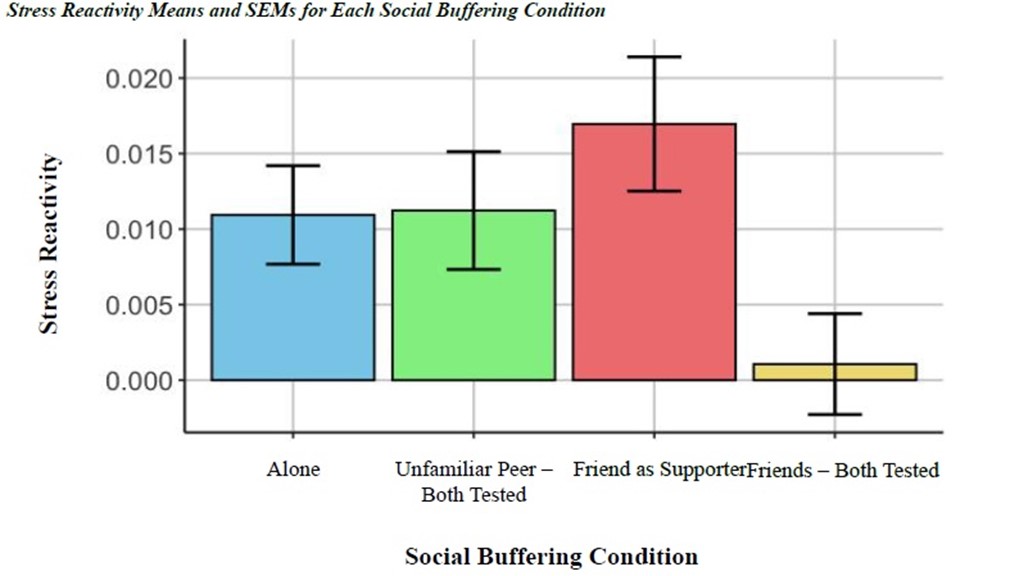Friends, Peers, and Stress Study
October 15, 2024
By: Bonny Donzella
Thanks to hundreds of families and a bunch of college students, and a dedicated staff, we have results to share.
Years of research has shown us that important people in our lives can buffer the impact of stressful events. The Share the Load study pushes our understanding of the contexts in which that buffering is effective.
Among other things, the hormone cortisol helps the body cope with challenges. For example, it prepares calories for ready use, as one would need to face the extra effort of some stressor. We know that cortisol responses change over development, and, we know that social relationships are powerful buffers of stress hormone activity.
The first relationships that buffer stress are the child’s relationships with parents. But as children approach puberty and beyond, parents are less effective at lowering their child’s stress hormone production when facing a challenge, like giving a speech in front of judges. Given that the teen years are a time of vulnerability to anxiety and depression, it is interesting that this is also the time when they lose their stress buffers.
Or, do they? Perhaps this is a period of social development where friends step in to help with stressful challenges, in the same way that parents do for younger children. Previous studies from our group found that when teens bring a friend into the lab for a cortisol-provoking challenge, having the friend help you prepare actually increases the cortisol response. “Oh no! We had them bring their own judge!”
This time, we tried to create a friend condition that more closely mimicked how friends experience challenges in real life: they do it together. In the Share the Load Study, we asked whether friends could buffer stress when both the target youth and friend were preparing together to undergo the stressor; that is, when they shared the load. Participants were randomly placed into the following conditions (Figure 1): 1) Alone, 2) Unfamiliar Peer – Both Tested, 3) Friend as Supporter, 4) Friend – Both Tested. Youth prepared for and then delivered a speech and verbal arithmetic in front of two judges as part of this socially-evaluative stressor known to elevate cortisol.
As you can see in Figure 2: only when your friend is also facing the challenge does social buffering occur! Unlike in childhood when parents help their children prepare for a social evaluative stressor, in early adolescence having a best friend help seems, if anything, to increase the stress. However, sharing the load by preparing to undergo the stressor together provides a strong stress buffer. Adolescents can use friends for social stress buffering at least when they undergo a stressor together.




